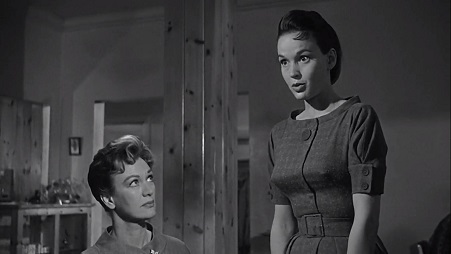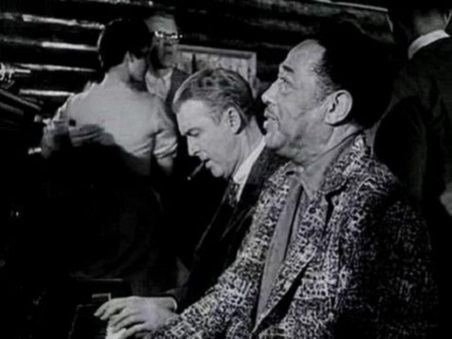Drama, romance and war are themes of today’s movie review as we review a second straight film with actor Peter Lorre in a starring role. A decidedly international cast with World War Two tension underpinning the story and the lived experiences for much of the cast, we look to the Michael Curtiz directed film Casablanca (1942).

The film opens in December, 1941 with American expatriate Rick Blaine, as portrayed by Humphrey Bogart, operating a bar and gambling parlor in Casablanca, Morocco. While ostensibly playing a neutral part in world affairs, Blaine’s bar counts German and Vichy French military officers among its patrons. An important fiction offered to Blaine in this setting is access to this notion of “letters of transit,” which are more valuable than gold to refugees stranded in Casablanca with a desire to leave the political threats to their lives dictated by being present in Europe and North Africa. Peter Lorre, as Signor Ugarte, had a hand in assisting the movement of black market materials like the all-important “letters of transit.”

There are affairs of the heart at play for Rick Blaine, which in part is animated by the romantic feelings he shares with Ilsa Lund, as portrayed by Ingrid Bergman. Lund is accompanied by her renowned Czech resistance leader and fugitive Victor Laszlo, as portrayed by Paul Henreid. Blaine spots the couple, and learns of the couples need for letters of transit, after Ilsa asks piano player Sam to play the song As Time Goes By in Blaine’s bar. Sam, friend and piano player for same, was portrayed by Dooley Wilson.
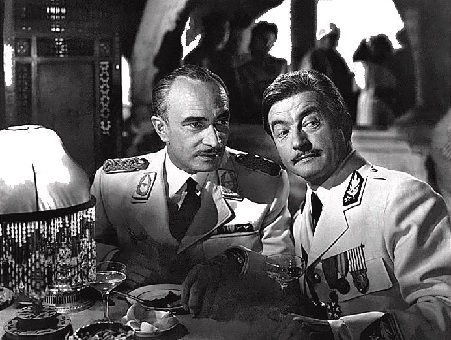
German Major Heinrich Strasser, as portrayed by Conrad Veidt, knows full well that Laszlo and Lund are seeking “letters of transit” for passage of to America, which Strasser intends to thwart. It is here that we learn that Rick’s friendly business rival, Signor Ferrari as portrayed by Sydney Greenstreet, suspects that Blaine is in possession of the “letters of transit.” The depth of Strasser’s moves to thwart what amounts to Blaine’s means to helping Laszlo and Lund reveal dramatic, romantic and war-provoked tension between all these parties. French Vichy Captain Louis Renault, as portrayed by Claude Rains, has no sympathy for the safety of Laszlo or Lund.
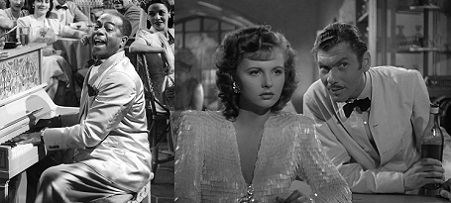
In the midst of this, Russian bartender Sascha, as portrayed by Leonid Kinskey, develops feelings for French refugee Yvonne, as portrayed by Madeleine Lebeau. Yvonne was seeking “letters of transit” in the middle of the events above for her husband and her, briefly having feelings with and for Rick Blaine in this window. When thinking who should receive the two letters of transit in his hands, Blaine clearly had options. The depth and fullness for how the emotional depth of the many threads of feeling resolve themselves is where the true feet of this movie are felt.
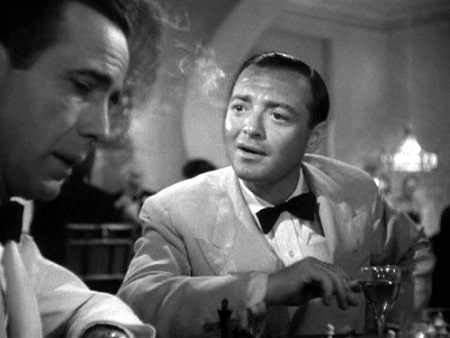
It was at the intersection of the competing idealism and cynicism of the respective romance, drama, and warring elements of the tensions in Casablanca that the Rick Blaine character lived. That there is a feeling that redeems a sense of the human spirit in many of the threads for the film that the film won three Academy Awards, for Outstanding Motion Picture, Best Director and Best Screenplay. It is for much of these reasons that we grant Casablanca as directed by Michael Curtiz 4.5-stars on a scale of 1-to-5.
Matt – Wednesday, September 8, 2021




